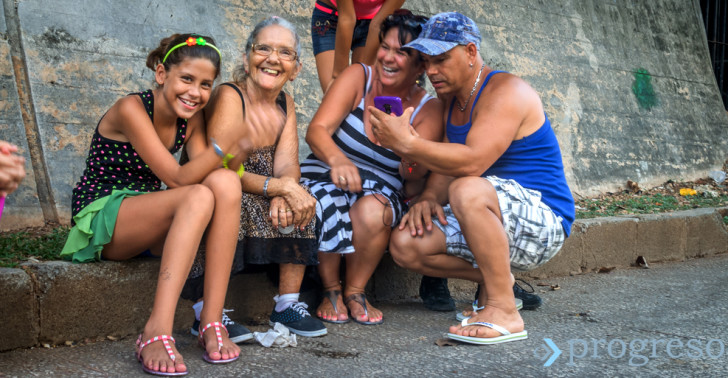
The Wi-Fi that unites us
HAVANA — The creation of public Wi-Fi hotspots in the Cuban capital has been, in many ways, THE summer attraction.
That’s how it has been described in the Cuban media, even though it is a costly attraction and, more than a means of entertainment, is a necessity this century for this and other societies.
Especially for a country where emigration separates hundreds of families and friends.
Which raises the question: What do the people who use this new service do? Many of the people we see sitting on sidewalks, staircases or benches have been using this technology for only a short time. They are learning.
Maybe that’s why most of the users we interviewed (their public conversations signified a waiver of privacy) spent their time on the social networks and messaging services. They were engaged in communication rather than securing information, because information gathering takes time and time is money.
We wonder how long it will take before the users start to use the Web and its tools with greater awareness and determination. In particular, we wonder about the cost of their learning.
But let’s return to the basic ability: communication. With whom? What for?
The massive use of applications for free chatting and video calls — such as imo and WhatsApp — indicates that the users are trying to satisfy a need that has been postponed for a long time.
That’s clear to see when they talk to relatives, when a girl connects for a few seconds with her boyfriend whose taxi is traveling through the connectivity zone, when several people gather to talk to friends (“look who’s here with me now”), when someone sings congratulations into a cell phone, or when someone across the street cannot hold back tears.
Putting aside the complaints and inconveniences that have grown alongside the opportunity for connection (basically, the fees have risen, as well as the scant comfort and privacy of the 35 spaces created nationwide), the positive results of this measure have been the closing of the family gap and the end of the isolation imposed by physical and cultural separation.
The minority of Cubans who can afford the service are now a bit closer to their loved ones.
The option is clear. Normally, if you have 2 convertible pesos (CUC), you can phone any country for less than two minutes, for a fee ranging from 1 to 1.60 CUC. However, with the new ETECSA service, you can be on the phone for one hour for the same 2 CUC. And not just talking, but also seeing whoever you’re talking with — or laughing, or singing, or weeping with.
Logic will tell you that ETECSA, Cuba’s only telecommunications company, is losing a lot of money, rather, is not making any money. That’s because 2 CUC for an hour’s connection is a high rate in the context of the average monthly wage, about 23 CUC.
According to data published by Cuba’s Inter Press Service earlier this year, Cuba has 400,000 active cell phones, 507,000 Nauta e-mail accounts generating more than 1 million e-mails a day, and more than 400,000 e-mail messages sent through Nauta every day.
As of May 2015, ETECSA had collected more than 472,000 CUC selling recharge cards at the rate of 4.5 CUC each. Not a revenue to sneer at. Profit is being made.
That’s the cost of better and more systematic family communications in a country with more than 2 million émigrés, approximately 18 percent of the population. That communication is costly, yes, but also priceless.
Photo at top by Carlos Ernesto Escalona Martí (Kako).
Progreso Weekly authorizes the total or partial reproduction of the articles written by our journalists as long as source and author are identified.

